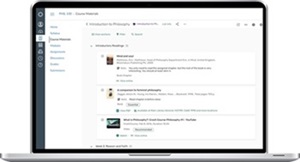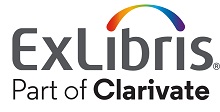Improving Library Performance and Student Outcomes: A Conversation with Jessie Ransom
I'm sure every library has encountered this situation: a student comes in and says, “do you have this book? I need it for this course,” and that's the first time that the library ever hears about this resource being mandatory reading for a course.


Jessie Ransom has worked with Ex Libris’ course resource management solution, Leganto, for the past 5 years, first as a product specialist and now as the Senior Product Manager. In the conversation below, Jessie shares her insight into how librarians are using Leganto to benefit students, faculty and the library.
The text has been lightly edited for clarity.
How does Leganto help librarians make better purchasing decisions?
I'm sure every library has encountered this situation: a student comes in and says, “do you have this book? I need it for this course,” and that's the first time that the library ever hears about this resource being mandatory reading for a course. If the library has information from instructors in advance about mandatory reading, librarians can be more proactive about making these resources available to students.
With Leganto, you can make more effective decisions about your budget because you get access to the right data—you can see exactly what's going to be used in courses, and how it aligns with your existing collections. You can make better decisions about what to buy because you can see how many students are in the course, which readings are required or optional, and whether students need to read the whole book or only a single chapter.
Just having access to the data about this lets the library make more effective decisions about their collection. You can guess all day long about what your users might need. But if you are buying something that's being used in a course you know it's going to be used. We heard a story recently from one of our customers who said they'd spent approximately $5 million on items that were never used.
Can Leganto make life easier for faculty?
One of the biggest challenges in working with faculty is that they are so busy. It’s hard to capture their attention and to be a priority among the many, many, many things that faculty are doing. What they need more than anything when it comes to course creation is something that's easy, that helps them and that saves them time.
With Leganto, we’re making it much easier for faculty to work with the library, and in turn, we're making it easier for faculty to help their students succeed in their courses.
 Leganto allows faculty to organize everything they need for their courses in one place. They don’t have one place where they share the information with students and a separate place where they get help from the library. Instead, instructors can do their work once and the library can take care of ensuring the students can access the resources.
Leganto allows faculty to organize everything they need for their courses in one place. They don’t have one place where they share the information with students and a separate place where they get help from the library. Instead, instructors can do their work once and the library can take care of ensuring the students can access the resources.
From our perspective, the library can sit behind the scenes within the faculty workflows – embedding the library into what faculty are already doing inside the learning management system. Faculty are doing the work that they need to do to organize their course, to build out their course, and they don't need to separately go to the library website or walk into the library and tell them what they need.
Instead, the library can just see all of that in Leganto. They can be there to support faculty and be there to support student learning.
Can you give an example of how faculty can save time with Leganto?
Take broken links - if faculty have a library resource in their course and it's not working, reporting this to the library can be a cumbersome process. The student tells the professor, the professor tells the library, the library fixes it. Then the library tells the professor, and then the professor tells the student. Whereas with Leganto the student reports it directly to the library. The library fixes it in Leganto and it's done—all students can access the item.
Leganto is a great way to streamline the communication and workflows, which saves time for faculty because these types of things take them out of course-related issues that they can't actually do anything about, issues that just take away from the teaching that they're doing.
How can libraries use Leganto to create new partnerships in and beyond the institution?
Part of the library’s role is to support student learning in general, and Leganto makes it easier for the library to support students in their courses. In the context of Leganto, there are many new partnerships for the library to build because so many people or groups on campus have the same goal.
You can build partnerships with faculty, with academic departments, or with instructional designers who want to ensure students can access their course materials and succeed in their courses. Or maybe create partnerships around helping to create more affordable courses. Because the focus is on student access and student success, you can build out partnerships with the office that focuses on student success or student affairs.
I think that's the sort of collaboration that Leganto opens up for the library, it empowers them to think about and create library partnership beyond who they may have traditionally worked with.
What role does Leganto data play in terms of expanding the library’s role?
I think one of the hardest parts of demonstrating libraries’ added value is that most libraries don't actually have the data to show this value. When I worked in the library, people would come in and say, “Oh, thank you. You're so helpful. I couldn’t have passed this class without you,” that sort of thing.
This is amazing, but when you're trying to express to decision makers at the university what the library does, you can't say, “Oh, people come in and say that we're really helpful.” You have to have data, because that's how leadership measures return on investment.
 We have several Leganto customers who are using Leganto to measure the impact of their library collections on students in their courses. From a financial perspective, in North America, learning affordability is a big concern. Students are dropping out because they can't afford their textbooks, and libraries are seeing this as an opportunity to highlight the actual dollar amount that they can contribute to student success.
We have several Leganto customers who are using Leganto to measure the impact of their library collections on students in their courses. From a financial perspective, in North America, learning affordability is a big concern. Students are dropping out because they can't afford their textbooks, and libraries are seeing this as an opportunity to highlight the actual dollar amount that they can contribute to student success.
Really, this is work that the library is already doing. The library already provides resources for students to use in their courses, but most libraries don't have a way to measure that. To say, you know, we provide X number of resources that are used by Y number of students, and therefore we're saving Z amount of dollars.
With Leganto, you do have that information. We have customers who are using this to promote the library, to promote this as a key role that the library can play. In fact, customers who are measuring this report that the library collections are saving their students about 1 to $6 million a year.
Learn more about how libraries are making a difference in learning affordability
SPONSORED BY
RELATED
ALREADY A SUBSCRIBER? LOG IN
We are currently offering this content for free. Sign up now to activate your personal profile, where you can save articles for future viewing










Add Comment :-
Comment Policy:
Comment should not be empty !!!